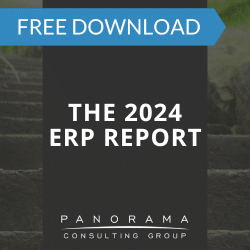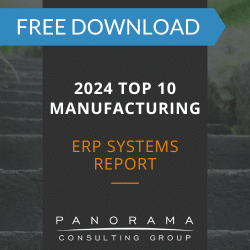What is HRIS implementation? Automating key HR processes can alleviate internal strain and free up in-house resources. A human resource information system (HRIS) is designed for this purpose.
HRIS systems have built-in tools that allow companies to meet core HR needs while improving employee retention and streamlining the recruiting process. While this can undoubtedly be exciting, HRIS implementation plans can be challenging.
Today, we’re looking at five of the most common problems and challenges of implementing HRIS (human resource information system) solutions and explaining how you can overcome them in your own project so you can avoid software failure.
Contemplating litigation?
We have multiple software expert witnesses available for provision of reports, depositions, and testimonies.
5 Problems & Challenges of Implementing HRIS Solutions
1. Establishing a Clear Strategy
One of the most common mistakes is rushing into a project before establishing goals.
We recommend assembling a project team that can help you clearly define software requirements. This team should also ensure continued organizational alignment throughout the project.
Requirements gathering is critical. Unless you know what you need the HRIS system to do, it can be nearly impossible to analyze available options and select a platform that meets your needs.
Building a project team helps you understand your needs because HR team members and other internal stakeholders can share their challenges and their desired future state.
2. Gaining Executive Support and Buy-In
As with any type of enterprise software, you need full support from your C-suite and critical stakeholders before beginning an HRIS implementation. However, this step in your HRIS implementation plan isn’t as quick or easy as you’d imagine.
For example, you might find that financial leaders rebuke or question the idea of investing in a new system. In these cases, developing a business case can help you explain why the software is necessary, while detailing the benefits it will provide. By consulting with internal team members, you can paint a clear picture of how the HRIS system will support stakeholder needs and ultimately, result in cost savings that benefit the whole company.
Another example of executive resistance is executives questioning the need for a third-party consultant. In this case, it can be helpful to emphasize the importance of taking a holistic approach to software projects, which is an approach that few are qualified to take.
A consultant that takes a holistic approach not only has the ability to help you make an informed software selection but can lend valuable expertise in terms of organizational change management and business process improvement.
The point here is that gaining executive buy-in can be challenging because there are many costs that must be justified. However, this isn’t difficult as long as you can make a strong case.
3. Sticking to a Timeline
As you plan the timeline for your HRIS project, it’s tempting to believe that the project can be completed relatively quickly. These unrealistic expectations can lead to timeline overruns that leave your team members feeling overworked and under-enthusiastic about the changes to come.
When setting key dates and milestones, be sure to consider all the activities that need to take place before, during, and after implementation. Also, be sure to allocate plenty of time for the following activities:
- Internal meetings and requirements gathering sessions
- Business process reengineering or improvement
- Consultations with third-party providers that will interface with the new system (e.g. payroll, benefits, time management services)
- Communication with implementation partners
- Data migration
- Training (for project leaders, stakeholders, and end-users)
- Communication planning (for all stakeholders)
All these activities are important to the success of your HRIS implementation, so we recommend building flexibility into your schedule in case one component takes longer than anticipated.
4. Staying on Budget
As you plan your HRIS implementation, it’s important to anticipate all the costs involved. Otherwise, you could find yourself halfway through the endeavor with limited funds available and a long list of tasks left to accomplish.
In addition to integration costs, there are costs associated with data migration, integrity, and security. You’ll also need to factor in costs for organizational change management and post-implementation support.
Make sure your project team clearly understands the financial commitment required for each component, so you have those funds in place before moving forward.
5. Navigating Organizational Change Management
Organizational change management (OCM) is the process of looking at your HRIS transformation from a people-centered standpoint, rather than a purely technology-centric one. In short, it means guiding your employees through the transition by empowering them to embrace new technology and processes.
While training is a key part of OCM, it is only a small portion of what’s required to help team members adapt to a new HRIS system.
Another component of OCM is communication. We recommend developing a communication plan detailing how you will provide the following information to various stakeholders:
- Why the HRIS platform is necessary
- What process changes will accompany HRIS implementation
- What milestones employees can expect throughout the project
Transparency is key. Being vague will only stir up feelings of doubt and distrust.
Training, communication, and other key change management activities can help you keep employees informed and engaged. By focusing on change management at every stage in the project, you can maximize user adoption.
Achieve HRIS Success
An HRIS system can mitigate HR pain points, while helping your organization achieve its long-term goals.
However, revolutionizing your company’s approach to HR management isn’t a project to take lightly. There are many problems and challenges of implementing HRIS solutions, so careful implementation planning is the best way to ensure your human resource information system delivers a high ROI.
Contact our enterprise software consultants below for a free consultation.














